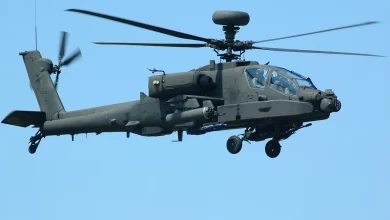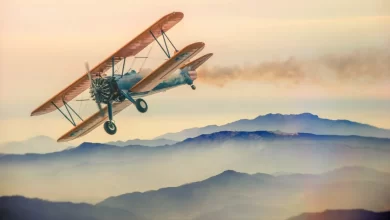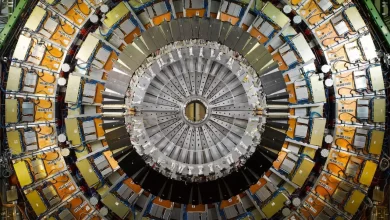Tanks are armoured vehicles designed for use on the battlefield. They are equipped with powerful weapons and are highly mobile, making them a key element of modern ground warfare. Tanks were first used in the First World War and have since been used in conflicts around the world. They are typically crewed by several soldiers, including a driver, gunner, and commander. Tanks are designed to be highly durable, with thick armour plating and reinforced tracks that allow them to navigate rough terrain. They are also equipped with powerful engines that allow them to move quickly across the battlefield. Tanks are typically armed with a variety of weapons, including machine guns, cannons, and missile launchers, and are designed to engage both enemy vehicles and infantry. Modern tanks are equipped with advanced targeting systems and defensive systems, including reactive armour and smoke screens, which help protect them from enemy fire. While tanks have been an important part of military strategy for over a century, they are also a controversial weapon due to their destructive power and potential to cause civilian casualties. As such, their use in conflicts is often a subject of debate and scrutiny.
- The first tanks were developed in the early 20th century, during the First World War.
- They were designed to break through enemy lines and provide cover for infantry.
- Little Willie was the world’s first operational tank. It demonstrated that a vehicle with armoured protection, an internal combustion engine, and tracks was a viable option for the battlefield.
- The first tanks were designed to navigate trenches and other obstacles on the battlefield but were slow-moving and difficult to control. As technology advanced, tanks became faster and more manoeuvrable.
- Tanks are heavily armoured and designed to withstand direct hits from enemy fire. They are often equipped with reactive armour, which helps absorb the impact of incoming projectiles.
- The term “tank” comes from the British Army’s initial attempts to conceal the development of these armoured vehicles from the Germans during World War I. They were referred to as “water tanks” to disguise their true purpose.
- The first tank battle in history took place during the Battle of Flers-Courcelette in World War I, where the British Army deployed their Mark I tanks for the first time.
- Tanks played a key role in the Battle of Kursk, the largest tank battle in history, which took place during World War II. Over 6,000 tanks were involved in the battle, which lasted for two months.
- Tanks are typically crewed by several soldiers, including a driver, gunner, and commander. The commander is responsible for directing the tank’s movements and coordinating its actions.
- Tanks are equipped with a variety of weapons, including machine guns, cannons, and missile launchers. These weapons are designed to engage both enemy vehicles and infantry.
- Tanks are highly mobile and designed to navigate rough terrain. They are equipped with reinforced tracks that allow them to traverse difficult landscapes, such as mud, snow, and sand.
- Tanks have played a significant role in many conflicts throughout history, including the First and Second World Wars, the Korean War, and the Gulf War.
- Modern tanks are equipped with advanced technology, including thermal imaging and night-vision systems, which allow them to operate effectively in low-light conditions.
- The most heavily armoured tanks can weigh up to 70 tons or more and require specialized transport vehicles to move them long distances.
- The use of tanks in conflicts is often a subject of controversy due to their destructive power and potential to cause civilian casualties.
- Despite advances in technology, tanks remain a critical element of modern military strategy and are used by countries around the world to protect their borders and engage in combat operations.
- The most common tank in the world today is the Russian T-72, which has been produced in large numbers since the 1970s. So far, over 25000 of these destructive machines have been produced.
- Tanks can be customized with a variety of weapons, depending on their intended use. Some tanks are designed specifically for anti-tank warfare, while others are used for infantry support.
- Tanks can operate in a variety of environments, from deserts to arctic tundra. They are equipped with heating and cooling systems to keep the crew comfortable in extreme temperatures.
- The largest tank ever built is the German Maus tank or Panzer VIII Maus, which weighed over 180 tons and was over 33 feet long. Only two prototypes were ever built. It has a fuel capacity of 2700 litres and was designed in 1941. The tank was equipped with two 128mm cannons.
- Tanks can be transported by air using specialized transport planes like the Antonov An-124 or the C-17 Globemaster III.
- The development of unmanned tanks, which can be controlled remotely, is an area of active research in the defence industry. These tanks could potentially be used in situations where it is too dangerous to send human soldiers.
- Tanks are often classified by their weight, with lighter tanks used for reconnaissance and heavier tanks used for frontline combat.
- Some tanks are amphibious, meaning they can operate on both land and water. These tanks are often used by marine forces and for amphibious landings.
- The United States Army’s main battle tank is the M1 Abrams, which has been in service since the 1980s. The Abrams have been used in several conflicts, including the Gulf War and the Iraq War. Approximately 10,400 units of this machine have been produced so far.
- Tanks can be equipped with a variety of defensive measures, such as smoke grenades, reactive armour, and jamming systems to disrupt enemy communications.
- Tanks are highly expensive to produce and maintain, with some models costing tens of millions of dollars to build.
- The use of tanks in warfare has evolved over time, with many modern armies focusing on developing highly mobile and versatile tanks that can operate in a variety of environments and situations.
- The use of tanks in warfare has evolved over time, with many modern armies focusing on developing highly mobile and versatile tanks that can operate in a variety of environments and situations.
- Today’s top ten tanks are the German KF51 Panther, the American Abrams M1A2, the Russian T-14 Armata, the Korean K2 Black Panther, the Chinese T-99, the German Leopard 2, the French Leclerc XL, the British Challenger 2, the Israeli Merkava V, and the Japanese Type-90.
- Some tanks are equipped with unmanned aerial vehicles (UAVs), which can provide intelligence, surveillance, and reconnaissance capabilities.
- Tanks can be outfitted with different types of ammunition, including high-explosive, armour-piercing, and anti-personnel rounds.
- The use of tanks in modern warfare is often limited by their vulnerability to anti-tank weapons, such as guided missiles and rocket-propelled grenades.
- Some tanks are equipped with night vision technology, enabling them to operate effectively in low-light conditions.
- Some tanks are capable of operating in extreme conditions, such as the soviet T-80BV tank, which can operate in temperatures as low as -40 degrees Celsius.






